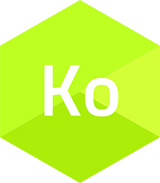2D-elektriskt ledande lim för flexibel elektronik och termoelektronik till låg kostnad
Syfte och mål
Huvudsyftet med detta projekt var att utveckla ett nytt mjukt elektriskt ledande lim (ECA) baserat på 2D-material för att möjliggöra en ny tillverkningsprocess för att tillverka termoelektriska moduler. Med ett motstånd <10 mohm och en hållfasthet på 45 n mm2 för en enkel skarv på ett kopparbelagt flexibelt polyimidsubstrat har 2d-eca överlägsna egenskaper jämfört med de befintliga eca:erna och tillverkning av flerbensmoduler har också demonstrerats. den nya kompositionen innehåller inga farliga komponenter som är vanliga i kommersiella lödningar.
Resultat och förväntade effekter
Med den nya 2D-ECA och automatiserad tillverkning genom dispenser och plocka-och-placeringsmaskin, förutspår ParsNord att produktionshastigheten för TEMs kommer att öka och den totala kostnaden för systemet minskar med upp till 50 %. Dessutom förbättrar 2D-ECA den mekaniska flexibiliteten avsevärt jämfört med de konventionella lödningarna, vilket möjliggör inträde av TEM:er i stora självdrivna trådlösa sensorer och industriell IOT. Tillämpningen av 2D-ECA kan också utökas till nya områden som hybridtryckt elektronik, bärbar elektronik och töjbar elektronik.
Upplägg och genomförande
Med expertis i syntes av högkvalitativa 2D-material från IMRA, och expertis från LiU på organiskt ledande lim, har vi använt de exfolierade 2D-ledarna (metallsulfider och MXenes) till ett organiskt bindemedel för att erhålla ett nytt 2D-elektriskt ledande lim (2D-ECA) med hög elektrisk ledningsförmåga, mjukhet och god vidhäftning. Efter syntesen och karakteriseringen av dessa 2D-ECA avser RISE att använda denna teknik i pilotlinjen för tryckning och elektronik tillsammans med ParsNord för att tillverka flexibla termoelektriska moduler.




